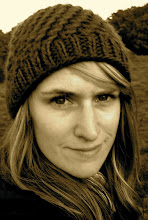 Looking out onto Stirling from the castle wall
Looking out onto Stirling from the castle wallI write from an Edinburgh City “First Bus” rattling its way through peaceful byways and villages, all tiny and dotted with signs for institutions like “Ye Olde Hole In The Wall Pub” and “Linlithgow Apothecary”. The bus drops me in Stirling and I meander up the leafy and cobble-stoned hillside walk to the castle. It’s an important region for Scottish pride, so with a full free day, and a sunny one, I wanted to check it off my list.
If you can deal with history, here are some things I learned:
Stirling itself was the location of two major Scottish victories in the late 1200s/1300s, spaced some 20 years apart: William Wallace (that’s right- “Braveheart”) over the English, and Robert the Bruce at Bannockburn, the victory that established Scottish nationhood. This original castle was torn down after Bruce’s victory, for fear that England would try to sack it again.
The rebuilt castle was passed along through generations of Stewarts in the 14th and 16th centuries. They seemed hard working and pretty cultured. James IV was “fluent in the native tongue of nearly all of his subjects including barbaric Gaelic”, which I found pretty generous. He built Stirling’s Royal Chapel for the baptism of his son James V, and then V built the Palace to impress his French wife. V is the father of Mary, who was donned Queen of Scots as a 6-day-old infant in the chapel (I went inside). Unfortunately, the main palace was closed for renovation, so I didn’t get to see the really Rennaissance-d out section.
All the fun at Stirling Castle ended when Mary’s son, James VI of Scotland became James I of England and moved the crew south to fight the French, and died in battle, his body lost and never found. Uh, I think.
For me, the most interesting part of the experience was, no surprise, arts-related.
With grants from British foundations and councils, Stirling Castle is a couple years into project with a talented group of British weavers to re-create the famous Hunt of the Unicorn Tapestries. The tapestries were once in the Stewart family collection, then lost, found in a lady’s vegetable cellar, and eventually purchased by Rockefeller for New York’s Cloisters Museum.
Master weavers are working full time on the tapestry recreation, and the public can go in and watch. There are signs everywhere warning DO NOT TALK TO WEAVERS and THIS REQUIRES INTENSE CONCENTRATION, NO QUESTIONS PLEASE. I wasn’t fooled. All artists know that other artists love talking about their work, and this artist was no exception. She was happy to pipe in when I quizzed the guard on artsy questions that she didn’t know how to answer.
She has been working professionally for 20 years, and you could tell - she was relaxed when she sat down to work. The massive construction of warp and weave didn’t seem the least bit overwhelming to her. Speaking to the artist was very cool, and much more engaging than my audio tour, so I spent the bulk of my time at the castle hanging around the studio.
After the day of touring, I got on the 2 hour bus to Edinburgh and fell asleep horizontally. A fellow rider woke me at one point to see if I was alright -- guess I was looking pretty knocked out. I blame it on all this history!





No comments:
Post a Comment